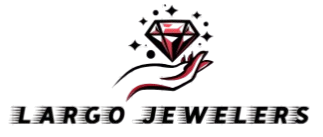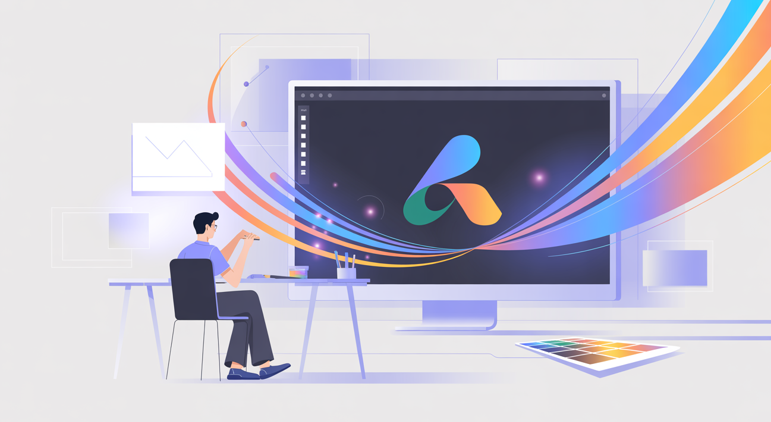We all see many creatives of the brands. But out of all that mostly stop us are usually the once that are moving and popping up. All because, moving logo grabs the eye and tells a short story. Movement shortens the time it takes to understand a message.
This piece shows why motion matters. It explains the psychology. It gives practical steps you can use right now. Furthermore, it also explains how 2d animation services and logo animation services fit into real marketing plans.
Why does Motion Increase Attention?
Our eyes respond to change. Motion is one of the fastest cues the brain uses to decide what matters. Eye tracking studies show that moving elements draw and hold gaze. Designers can use this to guide attention to a product, a value proposition, or a call to action.
Plain fact. People do not read everything. They scan. Motion interrupts the scan. It makes a viewer pause. That pause is an opportunity. You can explain what you do in fewer frames than you can with paragraphs. A single short animation can replace a long headline and a paragraph.
How does 2D Animation Affect Brand Recall?
Movement adds context. A static symbol suggests an idea, but motion explains it. A two-second logo animation can show personality, tone, and function. That creates a stronger memory trace. The result is better recall and clearer brand meaning.
Brands that use animated video and motion design see measurable gains in awareness and sales. Most businesses now use video as part of marketing. This widespread adoption shows one thing. Video, including animated assets, works.
What are Logo Animation Services & When Should You Use Them?
Logo animation services produce short, repeatable motion sequences of your logo. They craft the timing, shape changes, and sound if needed. These sequences are made for use in videos, apps, websites, and ads.
Use logo animation services when you need consistent personality across touchpoints. Use them to brand video intros, social clips, and product demos. Use them when your logo must do work beyond identification. A moving logo can explain service flow, highlight a unique selling point, or create a memorable sign-off.
What Types of 2d Animation Move the Needle?
Simple works best. Here are effective formats.
- Micro-interactions. Small loops for loading screens, buttons, or toggles.
- Logo reveals. Short intros for video and app splash screens.
- Explainer sequences. Two dimensional animated videos that outline how a product works.
- Social clips. Short, formatted loops for reels and stories.
- Data visualizations. Motion that makes numbers easier to parse.
Each has a role. Each supports distinct stages of the funnel. Micro-interactions help retention and UX. Explainers help acquisition and conversion. Logo reveals help recognition and brand unity.
How Animation Influences Conversions and Sales
Animated content shortens comprehension. Faster comprehension reduces friction. Lower friction improves conversion rates. Marketers consistently report better sales and engagement when video is used in campaigns.
Short-form video alone can lift conversions dramatically in test cases. Some marketers report sales increases of up to 80 percent when short clips are used in funnels and ads. These numbers vary by industry and channel, but the direction is clear.
What does Good Motion Communicate?
Motion communicates five things quickly.
- Hierarchy. Movement directs the eye to the most important element.
- Personality. Speed and timing create tone. A slow reveal feels premium. A snappy loop feels playful.
- Function. Motion can show how a product works, step by step.
- Trust. Smooth, considered motion signals craft and care.
- Memory. Motion anchors verbal messages into visual memory.
Use these deliberately. A brand that cares about trust should avoid jittery or unpredictable motion. A brand that wants to feel lively should use brisk, energetic timing.
Common Mistakes to Avoid
- Over-animating. Too much movement creates noise.
- Ignoring load performance. Heavy files slow pages and hurt SEO.
- Losing identity. Motion should match the logo shape and brand voice.
- Not testing. Unvalidated animation can harm conversion.
- Skipping accessibility. Provide reduced-motion variants for users who need them.
Plain constraints protect both users and your metrics. Use optimized file formats and include fallbacks.
Quick Implementation Plan for a Small Business
- Pick one use case. Choose either an intro for videos or a micro-interaction on the website.
- Draft a one-paragraph brief and attach your logo assets.
- Hire a small studio or a freelancer specializing in 2d animation services. Ask for sample work and frame timing tests.
- Test the animation with a small audience and measure a clear metric, such as click-through rate.
- Iterate twice and then roll out to other touchpoints.
Conclusion
Pick one asset. A logo intro for your next video or a loading micro-interaction. Use a short brief. Ask for a 3-second proof that loops. Test the proof against your static version with a small ad spend or an internal user test. Measure attention and conversion. Decide based on data.
Motion is a decision about clarity, not decoration. It helps people find meaning faster. It helps your brand stand out where static assets fade. Use 2d animation services and logo animation services to make that choice count.

